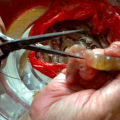No matter how a tooth was lost, whether it’s due to an accident or poor dental hygiene, dental implants can be the perfect solution for missing teeth. A dental implant is the procedure performed to replace a damaged or lost tooth with an artificial one. The surgical procedure involves replacing tooth roots with metal posts and then attaching an artificial tooth. The artificial tooth mimics a real tooth in appearance and function. This surgical procedure depends on the condition of the jawbone and type of implant used. Here are the most common implants used today.

- Endosteal implants
With these types of implants, the tooth roots are replaced by screws, blades or cylinders that are made of titanium or ceramic material. Langley orthodontists drill the implant into the jawbone. This implant helps hold the artificial teeth in place. These types of implants lie completely inside the jawbone, just below the gums. However, the artificial teeth are not directly connected to endosteal implants. A post is first connected to the implant and then the tooth is attached to the post.
In most cases, two surgeries are required. During the first surgery, a crew or cylinder-shaped implant is wrapped with Hydroxylapatite (HA), and then drilled into the jawbone. HA is an important component of the bone that prevents any kind of bad reaction between the implant and the jawbone. This component also encourages the growth of natural bone. After applying HA, the gum tissue is stitched. The healing process may take up to 6 months.
These types of dental implants are ideal if the jawbone is short and not thick enough to allow drilling of crews and cylinders into it. Patients with low bone density can also benefit from the implants.
- Subperiosteal Implants
These are inserted within the jawbone. Here, a metal framework is firmly secured to the jawbone, but the framework lies below the gum line. Posts are also used in this procedure. They project outward above the gum line through the metal frame. When the jawbone is not wide enough to accommodate endosteal implants, Langley orthodontists may recommend subperiosteal implants.
These types of implants are customized according to the width and height of the patient’s jawbone.
- Transteal implants
These types of implants are fitted on the lower jawbone. Compared to other types, they are not very popular as the surgical procedure is quite complex and extensive. During the procedure, a metal plate is attached at the bottom of the jaw bone, with screws running through the jaw bone. The orthodontist makes an incision under the chin to fix the plate with screws and post. The artificial tooth is then attached to the metal post.
- Mini dental implants (MDI)
Individuals with bone problems such as inadequate jawbone structure are not suitable candidates for standard implants. Such people may be advised to go for MDIs. These titanium implants have a smaller diameter and are used to fix small teeth and pre-molars. Traditional implants are twice the size of MDIs. Unlike traditional implants that takes longer to heal, MDIs require a very short recovery period because they are minimally invasive.






























No Comments
Leave a comment Cancel